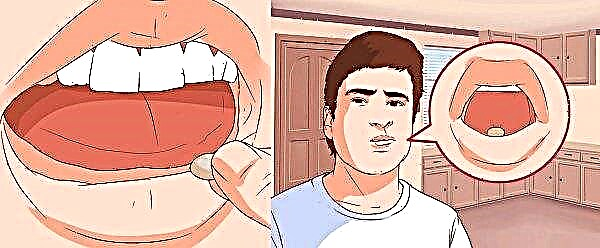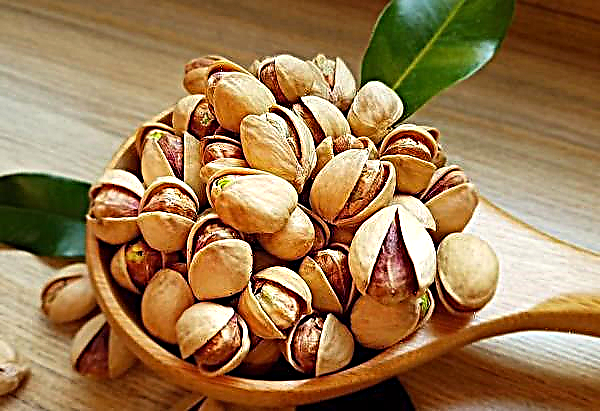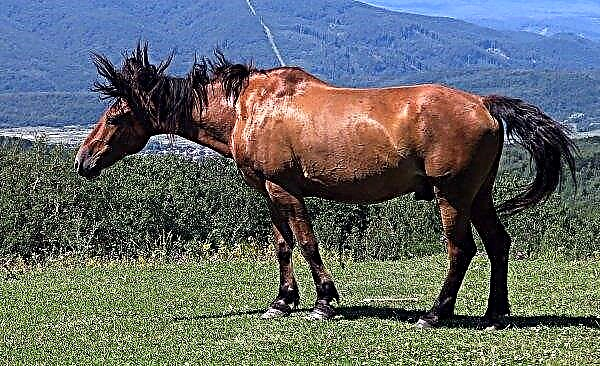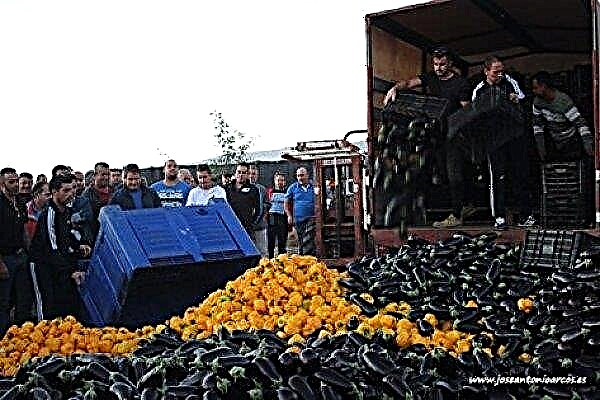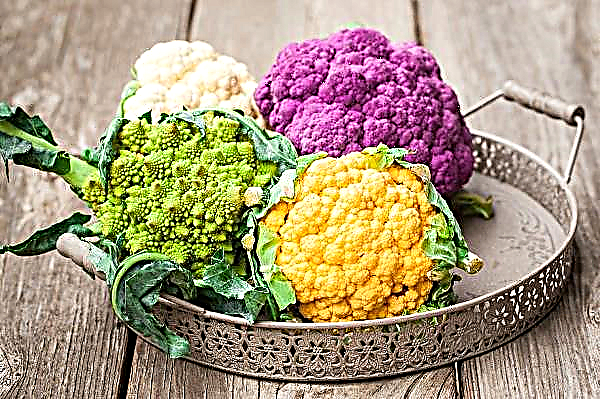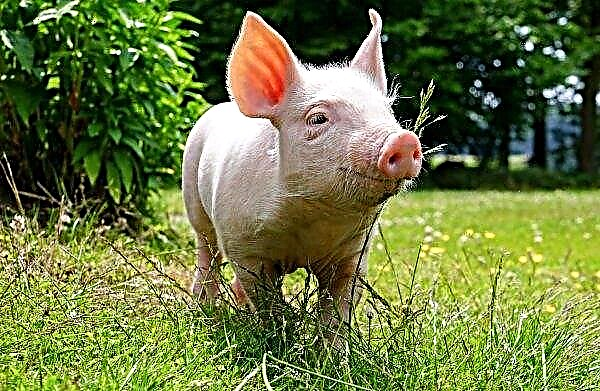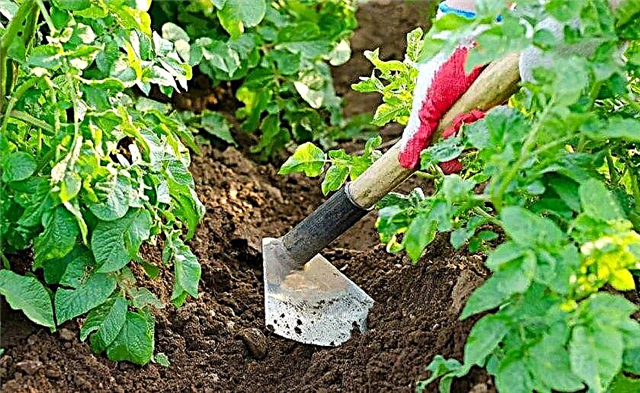Stromantha is a very unusual ornamental plant that can please its owners with its festive look at any time of the year and is characterized by many features. For the constant orientation of the leaves of the flower to the sun, and even at night, the stromanta secured the name of the “praying” plant and has since then been relentlessly attracting the attention of flower growers. This article invites you to get acquainted with the main types of stromants, home care of the plant, as well as possible difficulties during this process.
Features and description of stromants
Stromantha is a representative of the genus Marantov family, who came to us from the tropics of South America. To date, there is a lot of debate regarding the belonging of the plant to a separate species, because most botanists attribute it to the genus Kalatei.
The thing is that in appearance the stromantha is very similar to such kindred flowers as a ctenantha, calathea and arrowroot, which often causes confusion.
In natural habitats, this herbaceous perennial usually does not exceed a height of 1.5 m, and its bright and graceful foliage instantly catches your eye and deserves special attention.
Its main feature is the ability to adapt to the direction of sunlight, rising by night and falling, having previously opened, in the morning. The leaves themselves are quite large - 60 cm long and 20 wide, decorated with multi-colored stripes - classic green, creamy, pink, purple and snow-white in a variety of combinations. The reverse side of the leaves also surprises and pleases with a rich purple color, it is more shiny and smooth to the touch. Their movement to the light source is due to the connection with the petioles of such an articulation that allows them to move in every possible direction.
The reverse side of the leaves also surprises and pleases with a rich purple color, it is more shiny and smooth to the touch. Their movement to the light source is due to the connection with the petioles of such an articulation that allows them to move in every possible direction.
During flowering in nature, a stromanta throws a long thin peduncle with miniature compact flowers of yellow or white hues, and this usually happens in the summer.
The conditions of the South American climate allow the flower to grow in places with low temperatures and high humidity - on the banks of ponds and the lower tier of the forest, where warmth and dampness, as well as friability and breathability of the soil make it feel most comfortable.
At home, it is extremely rare to grow a flower more than 80 cm tall, and it is almost impossible to achieve its fanciful flowering.
The main types of stromants
Stromantha is characterized by a small number of species - there are only 13, but only 2 are most suitable for indoor culture - it is a pleasant and blood-red stromant. In order to successfully cultivate these varieties at home, it is necessary to find out their botanical features and, based on this, apply the correct agricultural cultivation technique.
The most popular of them are distinguished by the unique and varied color of the sheet plates and are represented by the following:
- Stromantha is pleasant. The most sought-after species, with a relatively small growth and a pleasant Christmas tree pattern on the leaves. Their length, in comparison with other varieties, is also small and amounts to only 17 cm, and the color that occurs most often is pale green. Strips of saturated emerald shade, only 6 mm wide. The reverse side of the sheet plates is no less attractive - gray with a bright pink coating. Such a peculiar color of this ornamental plant makes it easy to distinguish it from other types of stromants. However, when buying this variety, you should still be more careful, because it is often given for it another, very similar in appearance, the flower "Clenantus Pleasant", which in fact has nothing to do with stromants. Its height is about 30 cm, and oval, wider leaves, bright green and with a silver inside.
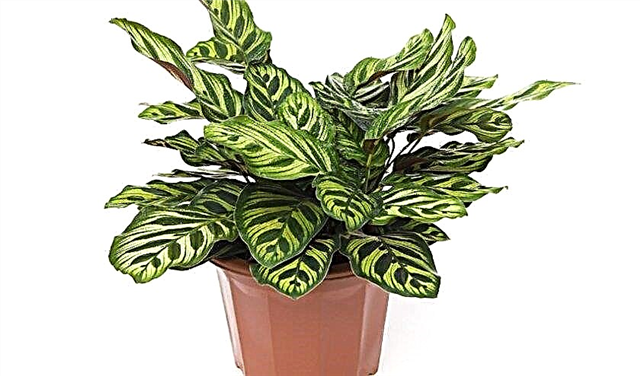
- Stromantha is blood red. No less popular variety of stromanthus, distinguished by its significant dimensions. With home maintenance, this specimen from the tropical forests of Brazil can grow up to 2 m, provided that it is properly cared for. In isolated cases, even the blooming of this decorative-deciduous plant in the spring and summer periods is noted. It is also distinguished by its undemanding nature - the flower is completely indifferent to lighting and soil composition. The underside of the leaves is striking in its crimson color, for which this type of stromanthus got its name. They themselves are up to 40 cm long, with a pattern on the surface in the form of the letter V, ellipsoid in shape and pronounced sharpening to the upper part. It is painted in a dark emerald color with a characteristic glossy sheen, which is very favorably set off from the general light green background of the flower. The blood-red stromantha served as the starting point for numerous experiments on hybridization and the creation of new varieties that differ only in the shape of the foliage, its color and patterns.

- Stromantha triostar (or "tricolor"). The most interesting and attractive variety of blood-red stromanthus for flower growers, which is appreciated for the unusual color of leaves - their outer surface is dark green with randomly scattered pink spots, and their lower part is strikingly different in bright burgundy color. The shape of leaf plates, reaching a length of 35 cm, is oblong-ovate, rounded to the base. The plant itself in captivity rarely exceeds a height of 70 cm, and long petioles allow the amplitude of its leaves to develop during the day so noticeably that it creates an incredible similarity between a flower and a living organism.
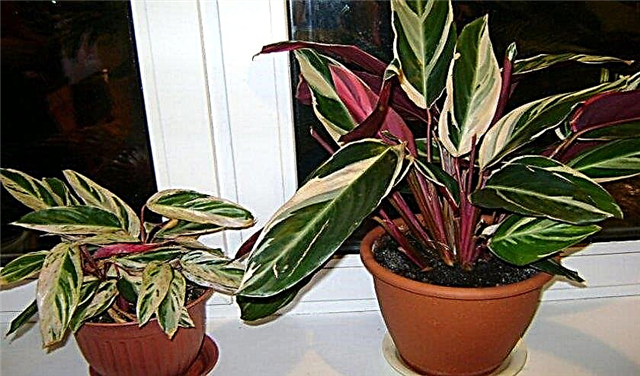
- Stromantha multicolor. Another unusual variety, characterized by a bright pattern of velvet foliage - the upper half is decorated with green and white stains that resemble splashes, and the lower side is represented by the classic color of burgundy. The leaf plate is oblong, about 30–35 cm long, shortly pointed. The flowering of this stromanthe at home is possible, but difficult to achieve, rewarding its owner with an unusual pleasant aroma that fills the entire room. The end of this period, in turn, is characterized by a very unpleasant feature - drooping and faded leaves, which will take a long time to restore and return to its former beauty.
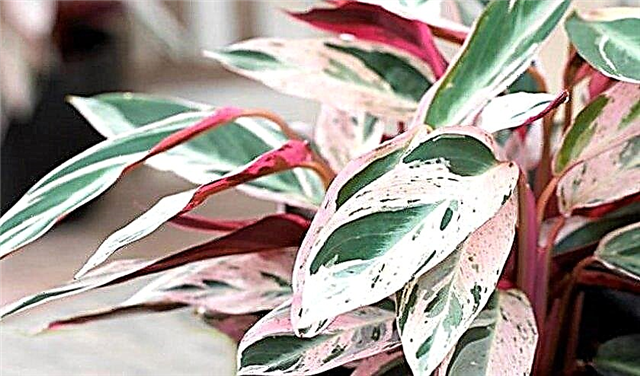
Home Care
Stromantha is a demanding and rather capricious plant, and therefore the maintenance of her house will result in daily chores and a significant waste of effort for you. Given its characteristics inherent in all tropical plants, for the flower you will need to create conditions as close as possible to the natural habitat.
Did you know? Stromantha is able to lift leaves up not only towards the light source, but also in the event of inclement weather, which makes it similar to a barometer.
Activities for caring for this unusual representative of the flora include watering and top dressing, as well as propagation and care of the flower during the period of flower prevention from pests. Let's consider all these points in more detail.
Optimal conditions for growing
Stromantha is especially sensitive and the most finicky of such criteria as lighting, temperature and humidity of air and soil, so you will have to try to satisfy all these requirements of the flower:
- Lighting and location. Based on the growth site of the stromanthus, namely, shaded areas of the forest, where direct sunlight penetrate with difficulty, we can conclude that she prefers bright lighting. The size and colorfulness of leaves directly depend on this indicator, which is why in winter it will be necessary to pay special attention to lighting - experienced flower growers recommend using lamps with artificial light, but without fanaticism, otherwise the leaves of the plant will rapidly lose their color and decrease in size. As for the warm season, direct sunlight on a flower may also be destructive, so you have to carefully shade it. Terrariums or mini-greenhouses are more suitable for especially large varieties of stromants, but more compact varieties can also be cultivated on the windowsill, choosing eastern and western directions. You can also place it on the north window, but in this case you will need to use fluorescent lamps for no more than 3-4 hours a day.
- Temperature. Indoor species of stromants prefer content at a fairly high temperature - not less than +25 ... + 27 ° C in spring and summer, but in winter the temperature regime will need to be moderate - around +15 ... + 20 ° C. With lower data, there is a high risk of hypothermia of the root system and rapid death of the plant, so you should approach this issue with particular seriousness. It is also worth considering that the stromant can not tolerate drafts and a sharp change in temperature, therefore in winter it will be necessary to protect the plant from the wind and exclude its contact with the glass.
- Humidity of air and soil. By virtue of its tropical origin, the stromanta is very demanding on this indicator and for the most comfortable growth it needs at least 90% air humidity. That is why the flower should be systematically sprayed throughout the year several times a day, especially in hot and dry weather. For this procedure, exclusively warm, settled water is used, and the spraying itself is carried out using a fine atomizer. To keep the desired humidity indicator at night, you can put a plastic bag on the pot. The humidity of the substrate in the warm season will also be required high, but in winter it is not recommended to overmoisten the flower, otherwise the plant will become ill.

Watering and feeding
Watering the flower will require plentiful, but not frequent - immediately after the soil has dried. It is very important to monitor the condition of the substrate - it should not dry out and at the same time be flooded, otherwise this will cause rotting of the roots of the stromantha.
Water for this procedure is used, as with spraying - standing and room temperature, in no case not ice. In winter, watering the flower is significantly reduced to 1-2 times a week.
As for top dressing, the plant reacts very well to them and most of all needs them in the warm season, namely from the end of April to September. This is usually used for liquid complex fertilizer for indoor ornamental plants, but not more than twice a month, since the stromant is very sensitive to exceeding the norm of mineral components, especially calcium.
For these reasons, this fertilizer is taken in half the dose of that indicated on the package so as not to harm the flower.
Important! The substrate for the stromantha needs to be selected quite loose and nutritious, and it is also necessary to provide it with good drainage, which most often is expanded clay.
Breeding
The propagation of stromants occurs in three ways - seed, division of the bush and cuttings. The last two are the most convenient and demanded, since it is extremely rare to propagate a flower with seeds and with a considerable expenditure of time and effort. Consider each optimal method in more detail:
Consider each optimal method in more detail:
- Propagation of stromants by division of the bush. This procedure is carried out in the spring during a planned transplant. For this, the plant is carefully removed from the container in which it grows and is divided into several parts, without damaging the sensitive root system. Usually the division occurs in 3-4 parts, however, especially large specimens can be divided into 5-6 parts. The resulting plantlets with well-developed roots and a moderate number of leaves are planted in small pots with soil prepared in advance on the basis of peat and poured with warm water. The following watering procedure is carried out only when the substrate dries out a little. After planting, the containers will need to be moved to a warm room and covered tightly with a transparent plastic bag until the root leaves are completely rooted and new leaves appear.
- Propagation by cuttings. Late spring or the beginning of summer is also best suited for cutting stromants. This method is carried out by cutting the upper part of the newly formed shoots of the plant, just below the attachment point of the leaf plate with the stem. The required length of cuttings should not exceed 10 cm, and each should have at least 3 leaves. Subsequently, they are placed in shallow containers with water, which are covered with plastic bags to create conditions for mini-greenhouses. After the cuttings take root, which, with proper temperature and humidity, takes about 2 months, they can be planted in the substrate.
Flowering period and dormancy
The flowering of stromants is a rather exciting phenomenon, which, if all the right conditions are met, can still be achieved. In the summer, she throws out a thin peduncle of medium length with bracts of burgundy color. The flowers themselves are rather plain-looking white, form panicles with a diameter of 8-10 cm, have a pleasant, pronounced aroma.
The flowering period is characterized by so much stress for the plant that after it ends, it immediately loses all its beauty - the leaves turn pale and wilt for a rather long time, but after recovery they will again be able to please with their colorful and unusual color. The resting period of the flower is almost imperceptible and, like most indoor plants, proceeds in the winter. Despite the inexpressiveness of this period, it is still desirable to give the stromant a rest and not to bother without urgent need.
The resting period of the flower is almost imperceptible and, like most indoor plants, proceeds in the winter. Despite the inexpressiveness of this period, it is still desirable to give the stromant a rest and not to bother without urgent need.
It is not necessary to feed her at this time, otherwise an excess of mineral substances will cause illness and even death in the flower. It is recommended to lower the temperature to + 18 ° C, and to provide maximum illumination with the help of artificial lighting.
Important! It is necessary to transplant the plant every year to create maximum comfort for the rapidly growing root system.
Pests, diseases and other growing problems
Since the flower is rather capricious and its cultivation is fraught with considerable difficulties, the slightest violation in the overall care complex can lead to irreparable consequences in the form of diseases, pests and other, no less unpleasant problems.
Treatment of stromanthus is an even more expensive and complicated procedure, which does not always end successfully, so it is extremely important to provide it with all the necessary conditions and follow all the rules of care. Consider the most common problems that arise when cultivating a flower and ways to solve them:
Consider the most common problems that arise when cultivating a flower and ways to solve them:
- Leaves dry and lose their color. The most likely cause is a lack of moisture in the room where the plant grows. Given the requirements of this tropical flower for air humidity, it is necessary to approach this issue thoroughly - to spray more often and make sure that the expanded clay in the pan is constantly wet. Often before drying, foliage loses its bright color. This may result from an excess of sunlight, which in too large a number slows down the vital processes of the stromanthus. The way out of this situation is very simple - remove the plant at partial shade or shade at noon.
- Leaves twist and growth is inhibited. This is a clear sign that the plant was subjected to improper watering. As in the case of waterlogging, a lack of moisture leads to a similar result - the leaves of stromanthus curl and dry. In no case should the soil dry out, therefore, after it is slightly dry, watering should be immediate.
- Wither leaves and rot stems. If you notice the presence of sluggish leaves and rapid decay of the flower stems, then most likely the problem is in the temperature regime that is not suitable for it. It is extremely important for a stromante to ensure a high temperature - not less than + 25 ° С, which is the closest to the conditions of its natural growth environment. In such a situation, simply move the flower to a warmer room or increase this figure in an existing one.
- Pests. Harmful insects can also bring a lot of trouble, getting rid of which will be extremely problematic. They settle on the lower part of the leaves of the plant and multiply at an incredible speed, which only exacerbates the situation. The most common pests that infect the stromantum are whiteflies, spider mites, scale insects and mealybugs. The easiest and most reliable way to get rid of them is to treat the plant with an ash-soap solution and leave for several hours, then rinse thoroughly with water and cover the flower with a plastic bag. Of the chemicals, the most effective are Actellik, Fitoverm and Fufan in the dosage specified by the manufacturer. Most often, one procedure is not enough and after a few weeks the flower treatment is repeated again, already with fungicides. In the case of a particularly severe lesion, diseased leaves are removed.
 Stromantha is a rather tender and sensitive plant, the care of which will require a lot of effort, but they will be more than rewarded with its decorative and very festive appearance, which will delight you all year round.
Stromantha is a rather tender and sensitive plant, the care of which will require a lot of effort, but they will be more than rewarded with its decorative and very festive appearance, which will delight you all year round.Did you know? There is an opinion that the stromantha has therapeutic abilities - it perfectly relieves fatigue and nervous tension, and also gives strength and recharges with positive energy for a long time.
This flower will certainly not leave an exotic lover indifferent, therefore it can be successfully used as a gift, and its botanical features only add zest to an already unusual-looking plant.





